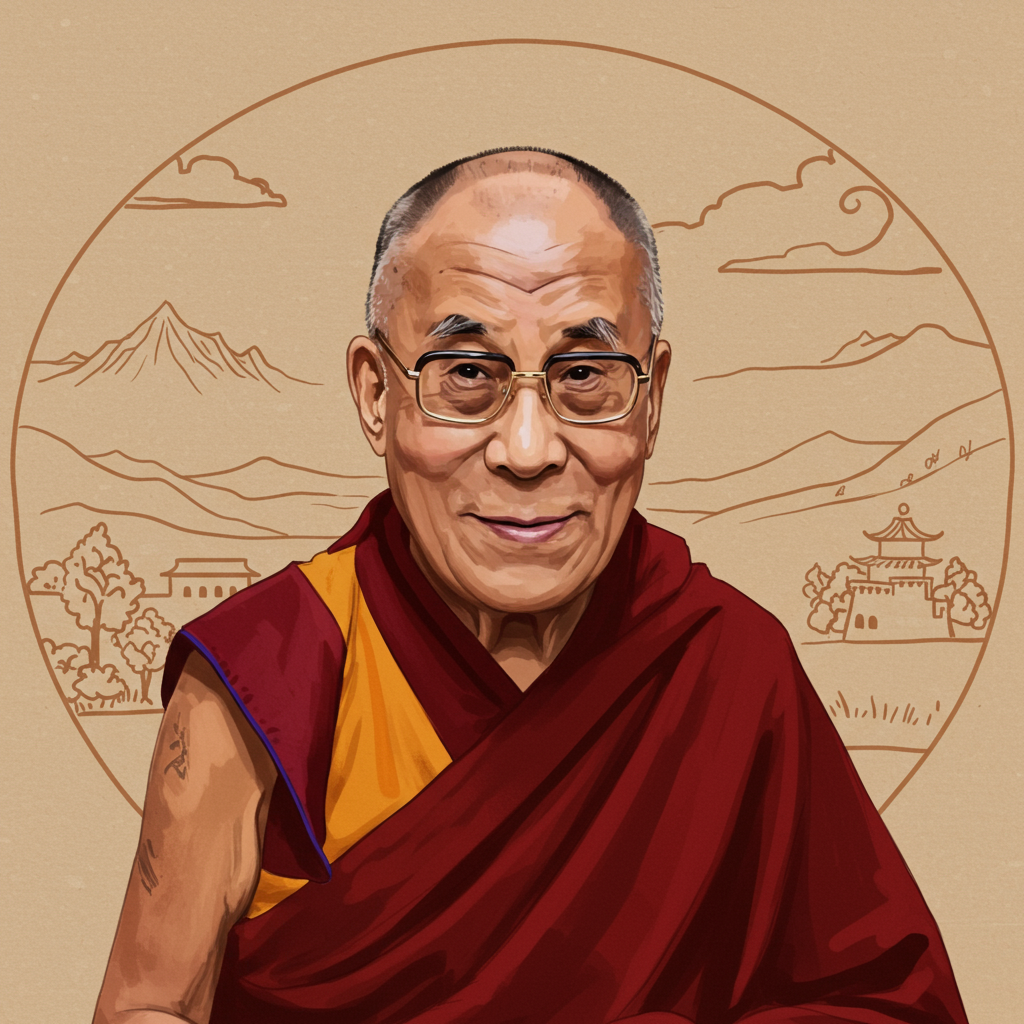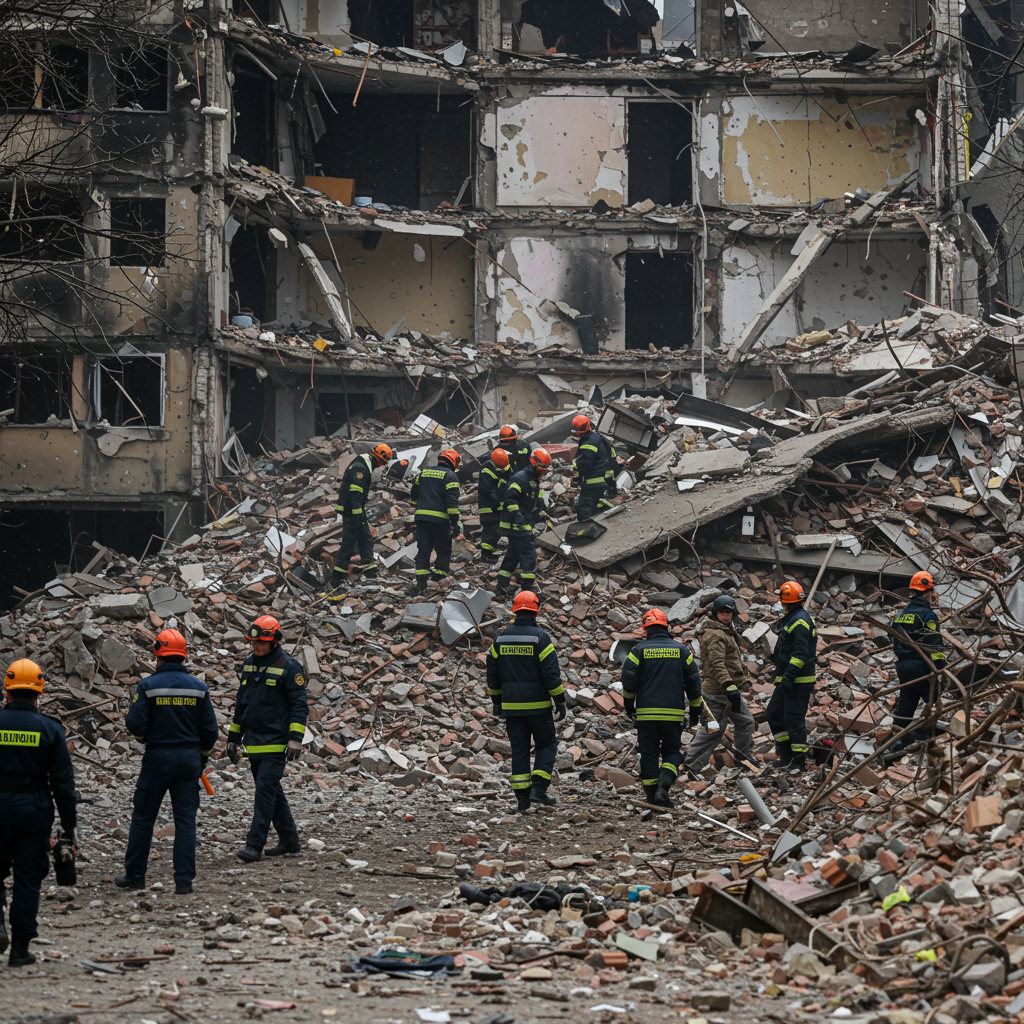His Holiness the 14th dalai Lama, Tenzin Gyatso, stands as both the spiritual head of tibetan Buddhism and a relentless global voice. For over six decades, he has championed the cause of the Tibetan people. His unwavering dedication focuses on preserving their unique culture, rights, and identity in the face of immense challenges. Despite living in exile, his message of peace, compassion, and non-violent advocacy resonates with millions worldwide. This commitment has cemented his place as a towering figure on the international stage.
Early Life and the Path to Exile
Born Lhamo Dhondup in a small Tibetan village in 1935, he was recognized at the tender age of two as the reincarnation of the 13th Dalai Lama. His early life was steeped in spiritual training. However, the political landscape of Tibet drastically changed with China’s takeover in 1950. Still a teenager, the young Dalai Lama was compelled to assume a greater political role. He even met with Mao Zedong during this tumultuous period.
The situation escalated significantly over the following years. Fear for the Dalai Lama’s safety and growing frustration with Chinese rule culminated in a large, spontaneous peaceful uprising in Lhasa on March 10, 1959. Tens of thousands of Tibetans gathered, risking everything to protect their leader and nation. When Chinese soldiers opened fire, the suppression was brutal, resulting in many casualties. Facing imminent danger, the Dalai Lama made a dramatic escape, disguised as a common soldier, fleeing into exile in India.
Advocacy from Dharamshala
His arrival in India marked a new chapter. He settled in Dharamshala, a town in the Himalayas, which became the seat of the Tibetan government-in-exile. From this base, the Dalai Lama transformed his role. He became a tireless advocate, dedicated to keeping the plight of Tibet and its people in the international spotlight. This transition was critical for sustaining the Tibetan cause globally.
Initially, the Tibetan government-in-exile sought full independence. However, disillusioned by a lack of progress in negotiations with Beijing, the Dalai Lama announced a significant shift in strategy in 1988. He introduced the “Middle Way” approach. This framework seeks genuine autonomy and religious freedom for Tibetans within the People’s Republic of China, rather than complete separation. This non-violent, diplomatic path became the cornerstone of his political advocacy.
A Global Voice for Peace and Rights
The Dalai Lama’s efforts gained global recognition. He traveled extensively, meeting with numerous world leaders, parliamentarians, and religious figures. His message extended beyond the political situation in Tibet. He spoke powerfully about the importance of cultivating inner peace, compassion, kindness, and universal responsibility. He became a leading voice for interfaith dialogue, emphasizing common humanity over differences.
His dedication to non-violence and peace was formally acknowledged in 1989. That year, he was awarded the Nobel Peace Prize. This prestigious award significantly elevated the international profile of the Tibetan cause and his own status as a moral authority. Despite his popularity and global respect, China continues to view him critically. Beijing often describes him using highly derogatory language, considering him a dangerous separatist.
Supporting the Tibetan Struggle Abroad
Advocacy for Tibet isn’t limited to the Dalai Lama alone. Many individuals and organizations globally work tirelessly to support the Tibetan people. For instance, Speaker Emerita Nancy Pelosi has demonstrated an unwavering commitment to Tibetan rights for decades. Her advocacy began with meeting the Dalai Lama shortly after his Nobel win in 1989. She has since visited him in Dharamshala multiple times.
Pelosi’s actions have been notably bold. In 1991, she unfurled a pro-democracy banner in Tiananmen Square, a direct challenge to the Chinese government. She has consistently condemned China’s human rights abuses, including the repression in Tibet. Legislatively, she played a crucial role in passing the Tibetan Policy Act in 2007 and supporting the Tibetan Policy and Support Act in 2020. These acts reinforce U.S. policy supporting Tibetan cultural preservation and human rights. Her principle is clear: failing to speak out on human rights due to commercial interests undermines moral authority everywhere. This international support is vital for the Tibetan freedom movement.
Calls for continued high-level engagement persist. Khedroob Thondup, the Dalai Lama’s nephew and a former Tibetan Parliament in Exile member, recently penned an open letter to US President Joe Biden. The letter urged President Biden to meet with the Dalai Lama during a planned visit to India. Thondup argued such a meeting would be incredibly valuable. It would demonstrate support for peace, signal that the Tibetan people are not forgotten, and potentially pave the way for more constructive dialogue about the situation in Tibet.
The Future of the Institution
As the Dalai Lama approaches his 90th birthday, the issue of his succession has become increasingly prominent and complex. Tibetan tradition dictates identifying a successor through reincarnation. However, the Dalai Lama has made powerful, explicit statements about the future of this ancient institution. He has recently indicated that Tibetans worldwide desire the institution to continue.
Crucially, he has stated his successor would be born in the “free world.” This means outside of China, explicitly rejecting any pick or interference from the Chinese government. He has long warned that any successor appointed by Beijing would not be respected by Tibetans. These recent remarks build upon previous considerations he has voiced, including the possibility that his successor could be female or even that the institution of the Dalai Lama might not continue at all. The future of the Dalai Lama institution remains a critical point of discussion and potential international tension.
A Symbol of Hope and Resilience
Despite his age and some health issues, the Dalai Lama remains active. He continues to receive visitors, offering his wisdom and spiritual guidance. He maintains a remarkably cheerful public persona, inspiring millions with his simple message of kindness and compassion. Based on a personal dream, he has even expressed an expectation that he may live to be 110 years old.
His life story, marked by struggle and resilience, is a testament to his inner strength. He often attributes his wisdom and compassion to his Tibetan roots and studies under Buddhist masters. He emphasizes that inner transformation through meditation and warm-heartedness, derived from early experiences of maternal kindness, are foundational to genuine happiness and peace. His philosophy offers practical guidance for leading meaningful lives. His influence transcends religious boundaries, inspiring positive change individually and collectively. Supporting education, environmental sustainability, and social justice are also key areas of his focus. The Dalai Lama is truly a living embodiment of compassion, resilience, and forgiveness.
Frequently Asked Questions
What is the Dalai Lama’s “Middle Way” approach to resolving the Tibet issue?
The “Middle Way” approach is the Dalai Lama’s proposed solution for the situation in Tibet. It is a non-violent path that seeks genuine autonomy for the Tibetan people within the framework of the People’s Republic of China. Unlike seeking full independence, this approach advocates for preserving Tibetan culture, religion, and identity while remaining part of China. It aims for peaceful coexistence and religious freedom.
Where is the Dalai Lama currently based and leading the Tibetan government-in-exile?
Since fleeing Tibet in 1959, the Dalai Lama has been based in Dharamshala, India. This town in the northern Indian Himalayas serves as the seat of the Central Tibetan Administration, often referred to as the Tibetan government-in-exile. From Dharamshala, he continues his spiritual leadership and international advocacy for Tibet and its people.
Why is the Dalai Lama’s succession a complex international issue?
The succession of the Dalai Lama is complex because the Chinese government asserts the right to appoint the next reincarnation, challenging the traditional Tibetan method. The current Dalai Lama has stated his successor must be born in the “free world” (outside China) and that any Chinese-appointed pick would not be recognized by Tibetans. This creates potential for competing claims and international tension regarding the future of Tibetan Buddhism and leadership.
Conclusion
The 14th Dalai Lama is much more than a spiritual leader. He is a symbol of enduring hope and a tireless advocate for a nation in exile. His life’s work, guided by non-violence and the “Middle Way,” has kept the cause of Tibet alive on the global stage. Through his teachings on peace and compassion, and his consistent calls for justice and human rights, he continues to inspire a worldwide movement of support. While the struggle for the rights and autonomy of the Tibetan people persists, the Dalai Lama’s legacy of resilience and his unwavering voice remain a guiding light for millions.
Word Count Check: 1036




